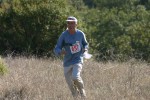High Summer in the High Sierras
BAOC 2009 Club Championships
Spooner Lake/Lake Tahoe-Nevada State Park
Date: Aug. 8 - 9, 2009
Location: Between Incline Village, NV and South Lake Tahoe, CA
Event Directors: - 510.681.6181, - 510.619.5728, - 510.526.9071
Course Setters: Rex Winterbottom, Nik Weber (GCO)
Type: B; 2-day combined middle- and long-distance courses for BAOC annual club championship
Saturday Middle-Distance Course Setter's Notes
By
August 1 Update
I've incorporated some of the suggestions by Roger Michel and Magnus Johansson, who graciously vetted the courses and made a few tweaks. Course statistics are now slightly adjusted.
And if you want some more running after your advanced course, I think you'll find the Yellow course quite interesting and appetizing as a forest sprint. (Although it was designed to suit the advanced beginners, the corner cutting between trails is fun.)
Introduction
Expect to be glancing at your map frequently during these middle courses, designed to keep you on your toes throughout. Given the steepness of the terrain, the main limiting factor in designing the courses, my goal was to make sure the legs involve a variety of navigation challenges. Not just to vary the leg length and make you change directions. I want you to find different kinds of approaches and schemes to attack each control. As appropriate for a middle, there are no major route-choice legs, to minimize putting the map down and running. (Middle is supposed to be all about map contact.) But a few of the legs give you some leeway to determine the best route, and I think it benefits the course.
Terrain
Steep, mostly runnable forest with lots of rocks and scattered meadows, usually not very large. The rocks are numerous and often bunched together. South of the lake and east of the lake there is more shrubbiness underneath the canopy and in the open that can slow you down. There are also a few patches just west of the lake. However, green and dark green areas are often penetrable—you may find a route that's not so bad through it. That can be the case with some of the aspen groves mapped light green. Not many trails, making it interesting to try to set beginner's courses.
Map
Generally accurate. Think big and you'll be okay. Try to follow specific rocks, and you may have problems, as many rocks over 1 m in size are not represented on the map. I did find that the boulder clusters are reliably mapped and serve better as beacons in the terrain. Knolls shown on the map (brown dots) are often not very prominent, and they are rockier than indicated on the map; sometimes the rockiness or stoniness is depicted on the map with a dot knoll or small hilltop, but often it is omitted. There has been some logging and tree cutting activity recently, so I avoided using some areas of the map for control sites; the courses take you near, or a little bit through, some of these areas that are mapped as white runnable forest, but can be more challenging to get through.
Courses
The beginner's White course has a lot of turns on the trails. The advanced beginner's Yellow course offers some challenge to shortcut the trails. The intermediate Orange course is quite physical, with some steep climbs, and features navigating off trail on prominent landforms. The four advanced courses are significantly shorter than their classic or "long" counterparts, which is appropriate. As discussed in the introduction, my goal was to provide as much variety as the terrain could give, to keep you involved with the map throughout the course.
Not had enough after a middle-distance course? Try the Yellow course—it's like running a forest sprint, with interesting off-trail shortcuts.
Course Statistics
Course Length Climb Controls
White 1.9 km 35 m 11 Yellow 1.8 km 55 m 10 Orange 3.8 km 225 m 11 Brown 2.1 km 135 m 11 Green 3.1 km 185 m 15 Red 4.0 km 240 m 17 Blue 4.3 km 245 m 19
Hazards
High concentrations of pine needles on the forest floor on some of the steep slopes make for some slippery running. I was wearing trail runners, not as appropriate as O-shoes would be. Because of the altitude, lather up the sweatproof sunscreen—the forest canopy isn't that dense—and hydrate yourself more regularly. Orange, Brown, Green, Red, and Blue courses have water controls. I didn't see any bears, and they usually prefer to keep to themselves.
Environmental Concerns
Do not go through meadows or marshes. The courses have been designed so that there is no advantage to doing that.
Gear
Pants and O-shoes are recommended for the Orange and advanced courses. Although I did the field work in trail runners, they were not optimal for moving through the terrain.

